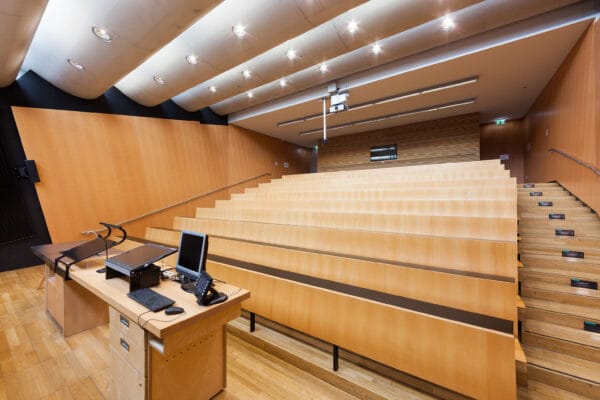
NAME:
SOWI - HS 2
BUILDING:
SOWI
FLOOR:
0
TYPE:
Lecture Hall
CAPACITY:
80
ACCESS:
Only Participants
EQUIPMENT:
Beamer, PC, WLAN (Eduroam), Overhead, Flipchart, Blackboard, Sound System, Handicapped Accessible, Light Installation
The spatiotemporal evolution of snow melt is fundamental for water resources management and risk mitigation in mountain catchments. Synthetic Aperture Radar (SAR) images acquired by satellite systems such as Sentinel-1 (S1) are promising for monitoring wet snow due to their high sensitivity to liquid water content (LWC) and ability to provide spatially distributed data at a high temporal resolutions. While recent studies have successfully linked S1 backscattering to various phases of snowpack melting, a correlation with detailed snowpack properties is still missing. To address this, we collected the first dataset of detailed wet snow properties tailored for SAR applications over two consecutive snow seasons at the Weissfluhjoch field site in Switzerland. First, our dataset enabled a better distinction of the melting phases and the validation of previous methods relying on multitemporal SAR backscattering to characterize melting snowpacks. Then, the dataset was used as input to the Snow Microwave Radiative Transfer (SMRT) model to reproduce the S1 backscattering signal. Using the detailed field data, we were able to reproduce the S1 backscattering signal, generally with a negative bias, and showed that treating wet snow as a pure absorber is inappropriate for the C-band. The results also highlight several key challenges for reconciling S1 signals with radiative transfer simulations of wet snow: (i) the discrepancy in spatiotemporal variability of LWC as seen by the satellite and validation measurements, (ii) the lack of fully validated permittivity, microstructure and roughness models for wet snow in the C-band, (iii) the difficulty of measuring relevant wet snow properties for C-band scattering such as internal snowpack structures and large scale surface roughness.

We and use cookies and other tracking technologies to improve your experience on our website. We may store and/or access information on a device and process personal data, such as your IP address and browsing data, for personalised advertising and content, advertising and content measurement, audience research and services development. Additionally, we may utilize precise geolocation data and identification through device scanning.
Please note that your consent will be valid across all our subdomains. You can change or withdraw your consent at any time by clicking the “Consent Preferences” button at the bottom of your screen. We respect your choices and are committed to providing you with a transparent and secure browsing experience.